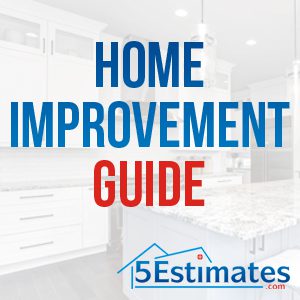
Home Energy Audit: Identifying Areas to Save Money and Energy
In today’s age, with rising utility costs and an increasing emphasis on sustainability, homeowners are on the lookout for methods to maximize their home’s energy efficiency. One proven method to pinpoint areas of improvement is by conducting a home energy audit. While the name might sound technical, the concept is straightforward: understand where your home is losing energy and implement measures to rectify those inefficiencies. By doing so, homeowners not only contribute to environmental well-being but also see substantial savings in their energy bills. Let’s break this down further.
What is a Home Energy Audit?
A home energy audit, sometimes referred to as an energy assessment, is a detailed evaluation of your home’s energy consumption. The goal is to identify where and how energy is being used, and more importantly, wasted. With a clearer understanding of these patterns, homeowners can implement targeted measures to rectify inefficiencies and subsequently reduce energy bills. The process not only saves money but also creates a more comfortable living environment.
While there are professionals who specialize in conducting detailed energy audits, homeowners can also undertake a basic version on their own. Here’s a more in-depth look into the process:
1. Initial Assessment:
Begin by evaluating your energy bills over the past 12 months. Look for trends or spikes in usage. This initial step can provide a clear picture of when and how you’re consuming the most energy.
Energy Bills Analysis:
- Historical Overview: By collecting your utility bills for the past year, you can gauge your home’s energy usage throughout the seasons. This will help identify trends, such as increased consumption during winter or summer months due to heating or cooling requirements.
- Peak Usage Identification: Highlighting moments of peak energy usage can alert homeowners to potential inefficiencies or behaviors that result in higher bills. For instance, a spike in electricity during summer might indicate an overreliance on air conditioning.
- Comparison with Previous Years: If available, comparing energy consumption over multiple years can show if your energy usage is increasing, staying constant, or decreasing. This could be reflective of changes in habits, the addition of new appliances, or the deterioration of home insulation over time.
Lifestyle Evaluation:
- Occupancy Patterns: Understanding when the home is most occupied can shed light on energy consumption habits. For example, a family with members working from home might have a different energy pattern compared to a household where all members are out during the day.
- Appliance and Electronic Usage: Recognizing which appliances and electronics are most frequently used can help pinpoint major energy consumers in the house. An old desktop computer that’s always on, for instance, can be a silent energy guzzler.
- Heating and Cooling Preferences: Everyone has a comfort zone when it comes to room temperature. Some might prefer a warmer house in winters, leading to constant heating, while others might be okay with slightly cooler indoor temperatures. Recognizing these preferences can be crucial in understanding energy consumption habits.
Preliminary Walkthrough:
- Quick Inspection: Before diving deep into specifics, a brief walkthrough of the home can help identify obvious areas of concern, such as a window that doesn’t close properly, leading to drafts.
- Noting Older Appliances: Appliances that are visibly old or out-of-date can be flagged for more detailed inspection later, as they’re often less energy-efficient.
Initial Feedback:
After gathering all the data from the initial assessment, homeowners can get a snapshot of their energy habits, potentially problematic areas, and areas where improvements might be possible. This assessment then guides the next steps of the energy audit, setting the stage for a more detailed evaluation of the home’s energy usage.

2. Exterior Inspection:
Inspect the exterior of your home, particularly the areas where different materials meet, such as corners or where the siding and chimneys connect. Look for cracks, gaps, or other openings that could be letting air in or out.
The exterior elements of a house play a significant role in maintaining a comfortable indoor environment and ensuring minimal energy wastage. Here’s what the exterior inspection entails:
Building Envelope Examination:
- Walls and Cladding: The type and condition of exterior walls are assessed. Factors like cracks, gaps, or deteriorating materials can compromise insulation and allow outside air to infiltrate, thus affecting the home’s energy efficiency.
- Roof and Attic: The roof is inspected for signs of wear, damage, or potential leaks. The effectiveness of the roofing material in reflecting or absorbing sunlight can also play a role in the home’s temperature regulation.
- Foundations: Foundations are checked for signs of moisture, cracks, or any other damages. Poorly insulated or compromised foundations can be a source of energy loss.
Window and Door Assessment:
- Seals and Gaskets: Windows and doors are evaluated for the effectiveness of their seals. Damaged or old seals can allow drafts, compromising the home’s ability to maintain its temperature.
- Glazing: The type of window glazing (single, double, or triple-pane) is noted, and its condition is assessed. Modern double and triple-pane windows provide better insulation compared to older, single-pane variants.
- Frame Material: Different frame materials have varying insulation properties. For instance, vinyl and wood frames generally offer better insulation than metal ones.
Ventilation and Air Leaks:
- Inspecting Vents: Proper ventilation is crucial. All vents, including those for attics, crawl spaces, and exhausts, are checked to ensure they are free from blockages and functioning efficiently.
- Draft Detection: Anomalies like unusual drafts are noted. These could be indicative of larger issues like cracks or gaps in the building’s structure, leading to unwanted heat exchange.
Landscaping and Shade:
- Tree and Shrub Placement: Trees and shrubs can act as natural insulators. Their placement is assessed to understand if they provide shade to the house during hotter months, potentially reducing the need for cooling.
- Paved Areas: Paved surfaces, especially dark ones, can absorb and radiate heat, affecting the microclimate around the house. Recognizing these areas can help in devising strategies to mitigate their heat effects, such as using lighter-colored paving materials or increasing green coverage.
Feedback and Recommendations:
After the thorough exterior inspection, homeowners will have a clearer picture of potential vulnerabilities and energy loss points in the home’s external structure. Combining this with the initial assessment, they can prioritize areas that need attention and make informed decisions about upgrades or repairs to improve energy efficiency.

3. Interior Inspection:
Move to the inside and check for drafts around windows, doors, and electrical outlets. An easy method is to hold a lit incense stick close to these areas and watch for the smoke’s movement. If it wavers or is blown into the room, you’ve identified a draft.
Here’s a breakdown of what an interior inspection typically covers:
Insulation Check:
- Attic and Roof: The attic’s insulation thickness and material type are assessed. Proper insulation in the attic is crucial as a significant amount of heat can be lost through the roof, especially in colder months.
- Walls and Floors: Insulation levels within walls and under flooring are examined, often using thermal imaging cameras, to detect areas of heat loss or cold drafts.
- Basements and Crawlspaces: These often-overlooked areas can be sources of significant energy loss if not adequately insulated.
Heating, Ventilation, and Air Conditioning (HVAC) Systems:
- Efficiency Assessment: HVAC units are checked for their operating efficiency. Older or poorly maintained systems can consume more energy.
- Filter Checks: Filters in HVAC systems are examined for dirt and clogs. A dirty filter can reduce airflow and force the system to work harder, consuming more energy.
- Ductwork: The condition and sealing of ductwork are assessed. Leaky ducts can result in the loss of conditioned air, leading to inefficiencies.
Lighting and Electrical Appliances:
- Energy Consumption: The energy ratings and usage patterns of major electrical appliances like refrigerators, washing machines, and ovens are reviewed. Older appliances or those in constant use can significantly add to the energy bill.
- Lighting: The types of bulbs used throughout the house (LED, CFL, incandescent) are noted. LED bulbs, for example, consume significantly less energy than traditional incandescent ones.
Water Heating System:
- Efficiency Rating: The water heater’s efficiency rating and its current condition are examined. A water heater can be one of the most energy-consuming appliances in a home.
- Insulation: The insulation of the water tank and the condition of pipes are checked. Proper insulation ensures minimal heat loss.
Behavioral Patterns:
- Thermostat Settings: Homeowners’ habits regarding thermostat settings, especially when away from home, are discussed. Constantly high settings or not adjusting during vacations can lead to unnecessary energy consumption.
- Electrical Usage Habits: Patterns like leaving appliances on standby, overuse of certain devices, or not unplugging chargers can add to the energy drain.

4. Check Insulation:
Many homes, especially older ones, are under-insulated. Check your attic, basement, and crawl spaces. Ensure insulation is installed correctly, with the vapor barrier facing the right direction (toward the living space).
5. Inspect Heating and Cooling Systems:
Old, inefficient heating and cooling systems can be major energy drains. Check filters, as they should be cleaned or replaced regularly. If your system is more than 15 years old, consider having it professionally inspected or replaced with a more energy-efficient model.
During a home energy audit, particular attention is paid to the HVAC systems to identify inefficiencies and suggest improvements. Here’s what the assessment of heating and cooling systems typically involves:
System Age and Efficiency:
- Lifespan: Most HVAC systems have an operational lifespan of 15-20 years. Older systems might not be as efficient as newer models, even if they seem to be working correctly.
- SEER Rating (for AC units): Modern air conditioners come with a Seasonal Energy Efficiency Ratio (SEER) rating, which measures cooling efficiency. A higher SEER rating indicates better energy efficiency.
- AFUE Rating (for heaters): The Annual Fuel Utilization Efficiency (AFUE) measures a heater’s efficiency in converting fuel into heat. Like SEER, a higher AFUE rating indicates a more efficient system.
Maintenance Checks:
- Regular Servicing: Regular maintenance can keep an HVAC system working efficiently. The auditor checks for records of routine servicing, filter replacements, and any repairs made.
- Signs of Wear and Tear: Any physical signs of wear, such as rust, dents, or unusual noises, can indicate a potential issue that might be affecting the system’s efficiency.
Airflow and Vents:
- Vent Obstruction: Obstructions or blockages in vents can hinder the efficient distribution of air, forcing the system to work harder. The auditor checks for any blockages or furniture that might be obstructing airflow.
- Balancing: Ensuring that all rooms receive adequate heating or cooling is essential. The auditor might recommend balancing dampers in the ductwork to evenly distribute air.
Thermostat Calibration:
- Accuracy: An incorrectly calibrated thermostat can cause the HVAC system to run more frequently than necessary. The auditor might check the thermostat’s readings against actual room temperatures.
- Programmable Thermostats: If the homeowner hasn’t already, the auditor may suggest upgrading to a programmable thermostat. These allow homeowners to set temperature schedules, reducing energy usage when the home is unoccupied.
Zoning Systems:
For larger homes or those with multiple stories, the auditor might discuss the potential benefits of a zoning system. By dividing a home into zones, homeowners can control the temperature in each area separately, leading to more efficient heating and cooling.

6. Review Lighting:
Examine the types of light bulbs you use. If you’re still using incandescent bulbs, consider switching to LED or CFL bulbs, which use significantly less energy and last longer.
7. Examine Appliances:
Older appliances often consume more energy. Consider their efficiency and how often they are used. For instance, an old second refrigerator in the basement can use up a lot of energy, even if it’s only half full.
8. Water Usage:
Hot water usage also consumes energy. Check the temperature setting on your water heater; it should be set to “warm” or around 120°F. Insulate hot water pipes so water remains hot by the time it reaches the faucet.
Here’s what a water usage assessment in a home energy audit typically encompasses:
Faucets and Fixtures:
- Flow Rates: The auditor will measure the flow rate from faucets to ensure they are within efficient ranges. A faucet producing water at a rate higher than necessary can lead to significant wastage over time.
- Aerators: Faucet aerators are devices that mix air with the water stream. They can effectively reduce the flow of water from faucets while maintaining a strong, usable stream. The auditor will check if aerators are in place and functioning correctly.
- Leaky Faucets: A dripping faucet can waste an astonishing amount of water over a year. The auditor will inspect for any leaky fixtures and recommend repairs if necessary.
Toilets:
- Flush Volume: Older toilet models tend to use more water per flush than newer, efficient models. The auditor may check the flush volume and suggest upgrades to high-efficiency or dual-flush models if deemed beneficial.
- Leak Detection: Using dye tablets or simple observation, the auditor can identify if the toilet is leaking water from the tank into the bowl. Even minor leaks can lead to substantial water wastage.
Showerheads:
- Flow Rate: Like faucets, showerheads have recommended flow rates to ensure efficient water usage. The auditor will measure the flow and suggest potential upgrades to water-saving models if required.
- Low-flow Showerheads: These are designed to provide satisfactory showers with less water. If the homeowner’s current showerhead has a high flow rate, the auditor might recommend a switch.
Appliances:
- Dishwashers and Washing Machines: Modern appliances are often designed with water conservation in mind. The auditor will inspect these appliances for their water usage ratings and might recommend upgrades if the current models are outdated.
- Water Heater: The efficiency and settings of the water heater can impact water and energy usage. The auditor will check the temperature settings, insulation, and general condition of the heater.
Outdoor Usage:
- Irrigation Systems: For homes with garden irrigation systems, the auditor will check for leaks, overspray, and efficiency. They may recommend watering schedules or upgrading to smart irrigation controllers that adjust based on weather conditions.
- Pools and Fountains: These can be significant contributors to water wastage if not maintained correctly. The auditor will inspect for leaks and provide recommendations for efficient maintenance.

Professional Audit:
While a DIY home energy audit can provide a lot of insights, there’s value in getting a professional assessment. Experts come equipped with tools, like blower doors and infrared cameras, which can identify hard-to-detect areas of energy waste.
A home energy audit is an integral step in understanding and improving your home’s energy efficiency. Whether done professionally or as a DIY project, the insights gained from the audit can lead to impactful energy and cost savings over time. Making informed changes based on the audit’s findings ensures that you’re making the most out of your energy consumption, leading to a more sustainable and economical living environment.
Benefits of a Home Energy Audit:
Financial Savings:
By addressing the inefficiencies identified in an energy audit, homeowners can reduce their energy consumption, translating to lower utility bills. Over time, these savings can be significant.
Enhanced Comfort:
No more cold drafts in winter or overly warm rooms in summer. By improving insulation and sealing any leaks, homeowners can maintain a consistent, comfortable temperature throughout their homes.
Environmental Impact:
Reducing energy consumption means reducing greenhouse gas emissions. By making their homes energy-efficient, homeowners play a direct role in combating climate change.
Increase in Property Value:
Homes with proven energy-efficient modifications can attract higher market prices, making it a worthy long-term investment.
Steps in a Typical Home Energy Audit:
Thermographic Inspection:
Using infrared cameras, auditors can detect temperature differences in and around the home, identifying areas where insulation is needed.
Blower Door Test:
This test determines how airtight a home is. A fan mounts to an external door and pulls air out of the house, lowering the interior air pressure. The higher outside air pressure then flows in through any unsealed cracks or openings, revealing the areas that need attention.
Examination of Past Utility Bills:
By reviewing utility bills over the past year, auditors can get a clear picture of a home’s energy consumption patterns. A home energy audit, while seemingly technical, is essentially a roadmap guiding homeowners toward energy efficiency. By understanding and rectifying energy wastages, homeowners not only enjoy the comfort of a well-regulated home but also relish the satisfaction of doing their bit for the planet. And if during the audit, you come across areas where renewable energy solutions, like solar panels, might be beneficial, it’s another avenue to explore to further enhance energy savings.
Remember, every home is unique, and the steps you take post-audit should reflect your home’s specific needs and your long-term energy goals. By investing in a comprehensive home energy audit, you’re taking a proactive step toward a greener, more sustainable future.
Should you ever consider harnessing the power of the sun for your home, 5Estimates is ready to connect you with competitive solar panel quotes today. Here’s to a greener, brighter future for all of us!

Leave a Reply